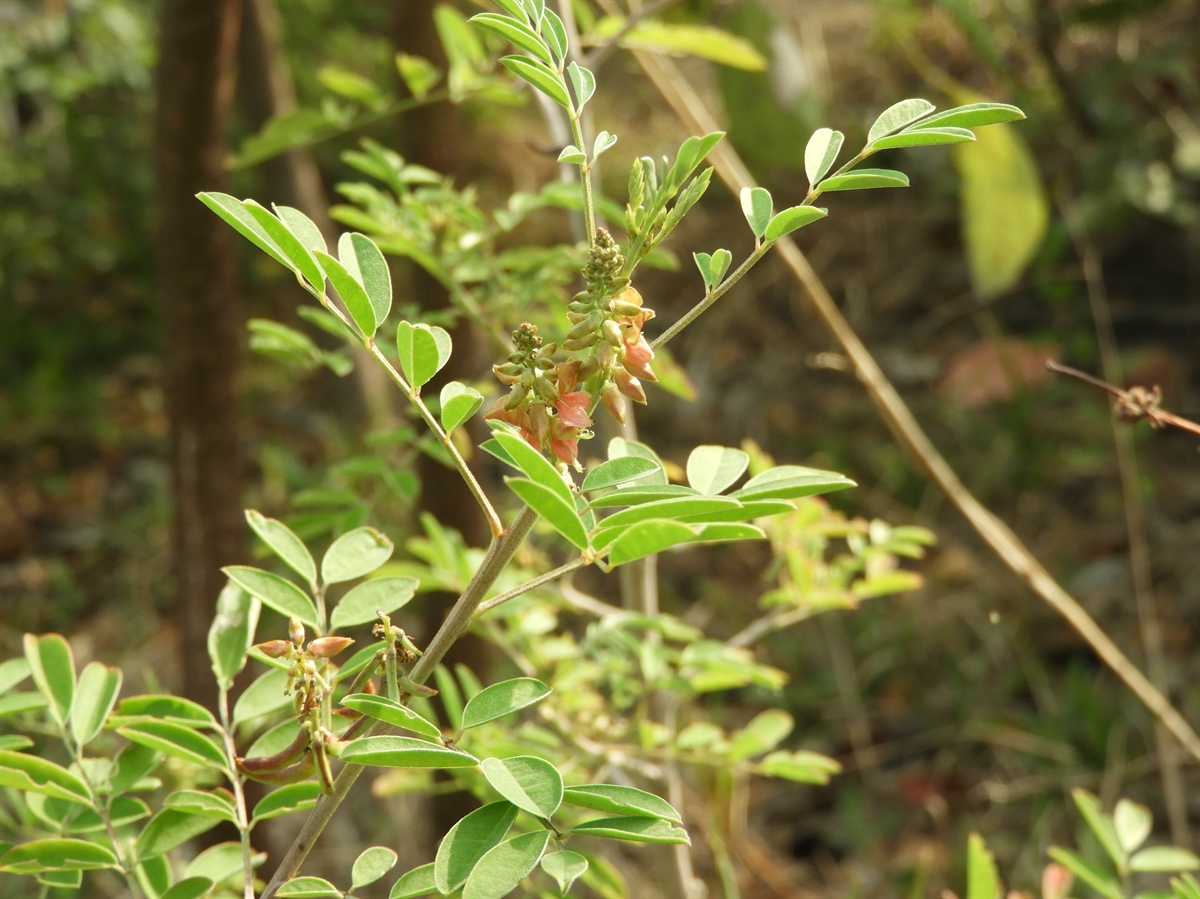Habit: Indigofera suffruticosa grows as a perennial shrub up to 2 m in height. New vegetation is pubescent. The odd pinnately compound leaves are arranged alternately with small linear stipules at the petiole base. The 9-13 leaflets are oblanceolate to elliptic to oblong with a mucronate leaf apex and an entire margin. The abaxial leaf surface is minutely pubescent.
The complete, perfect, zygomorphic flowers are arranged in terminal or axillary racemes. The calyx 5 are partially fused, pubescent green sepals forming a tube with the sepal lobes the same length as the tube. The corolla has 5 orange/yellow/pink petals, the upper enlarged to form the banner and the lower 2 fused to form the keel. There are 10 diadelphous stamens. The ovary is superior and has a single locule with numerous seeds. The fruit is a curved, pubescent when immature becoming glabrous with age, brown legume up to 2 cm in length at maturity that splits along 1 suture line.
Habitat: Indigofera suffruticosa grows in Human Altered environments (old fields, yards roadsides).
Distribution: Indigofera suffruticosa occurs in all island groups within the Lucayan Archipelago as well as the southern United States, the entire Caribbean region, and Mexico south to South America. It is now an invasive species in Africa, the Indian subcontinent, Asia, the Pacific, and Australia.
Medicinal/Cultural/Economic usage: Indigofera suffruticosa is not known to be used medicinally in the Lucayan Archipelago.



